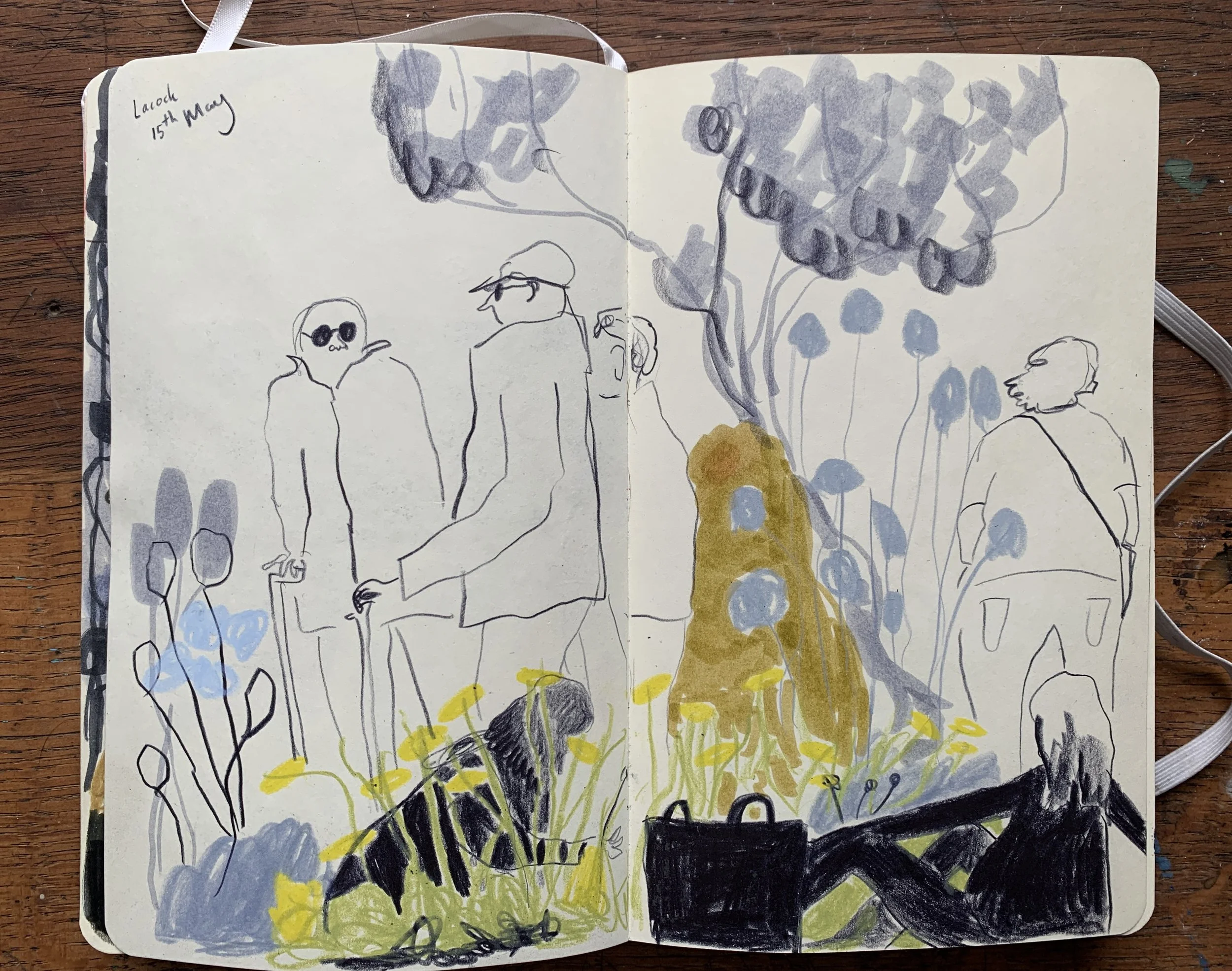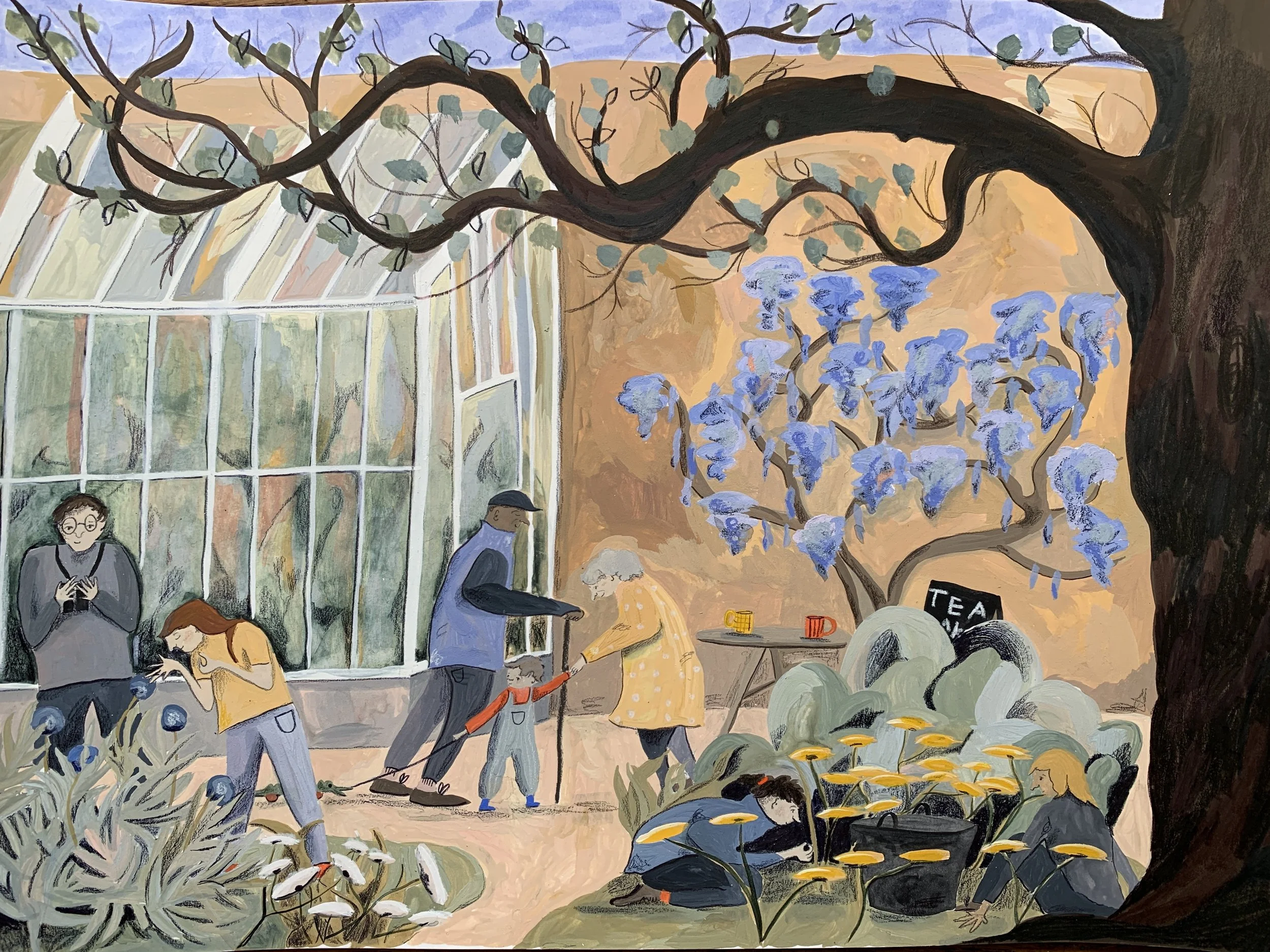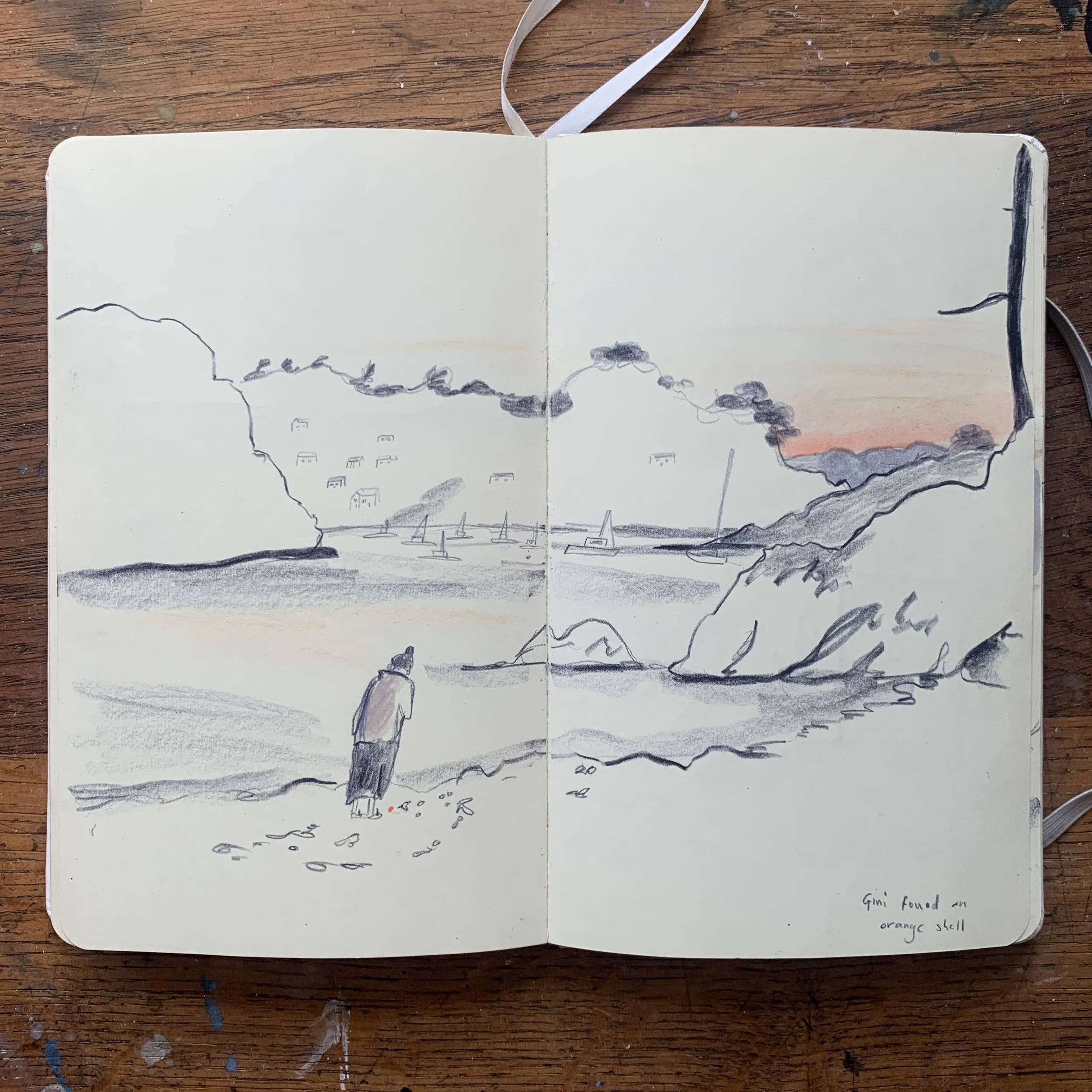July: Exploring Imaginative Drawing
This is something that I have been working on since starting the Sequential Image module on my MA. I love looking for and seeing narratives when I’m out drawing and sometimes, I draw the same people and their interactions over and over again in my sketchbook. When I was thinking about writing this blog post, I reflected on how my day-to-day life is often surrounded by stories. I love to sink into a good audiobook, seek out story based podcasts, enjoy hearing about my friends days and one of my favourite things to do is imagine what the lives are like of the people that I draw - where are they going, what will they be having for tea? That sort of thing.
However, as much I love narrative and story, making it work visually was something that I had to really work at on my MA, so over the summer I resolved to stretch my drawing muscles and do a bit of experimenting with imaginative drawing. There are three main processes that I have been testing out and thought I would share - I would love to know if you have any tips or ways of working that I could try!
The first way of working has been adapted from an excercise that we did at the end of the Observation and Experiment module on the Children’s Book Illustration MA that I’m currently studying on. We had to combine a scene that we had drawn on location and then drop characters into it. I shared this post on Instagram, but I thought I would go into more detail here. After spending the morning drawing at a National Trust garden, watching all of the people having their cups of tea, wandering through the flowerbeds and tending to the plants. I planned some compositions in my sketchbook using some of my location drawings as reference. This is something that I’ve only recently started doing, but is an absolute game changer. Doing this helped me to know which characters I wanted to include and where. I used the scene as a sort of stage set and added in interesting things that I had seen whilst having a wonder - like the cafe, for example. Then, I plotted the people in. I remember seeing this child pulling a wooden lion on wheels around the gardens, but really liked the idea of it being a crocodile, so I changed it for my composition. After making sure I had the composition right, I painted my semi-imagined scene.
The second process that I’ve been testing pushes the first idea a little bit further. I kept thinking about my friend finding an orange shell on the beach and started to imagine stories that would surround it. After drawing some panels and imaging what she would do next with the shell, I remembered seeing a child making a very elaborate sandcastle on the beach. So I drew my friend building a sandcastle and placing the shell on top. Pushing myself to imagine what would happen next, I thought about the sea and the sunset and how the tide often washes away what has been built in the day, and that became my mini narrative sequence.
Somehow, the short story didn’t quite feel right so I exchanged my friend for a child character and re-drew the panel's. Now that I had a child as the main character I felt that they needed a friend so I drew in a dog. Immediately, this changed the story again and added an extra layer as whilst the child was building a sandcastle, the dog could be digging a hole. To explore this story I initially used my sketchbook to plan the sequence, but then moved to my iPad, where I’ve learnt that it is much quicker to plan sequences and narratives and move bits about. I’ve been playing around with different ways of making artworks for this sequence and have tried painting and printing using the Risograph machine, but mostly I’m just enjoying having an explore. Below are two spreads from each rough draft just as an example to show how I switched the scenery and characters, and used the initial location drawing as a starting point - they aren’t meant to work as a narrative piece together or even side by side.
Initially, I wasn't sure what elements came into play when I painted my castle concertina (see below), it felt like it seemed to appear on the page when I was painting. However, after thinking about it for a while, I can see that there are quite a few experiences and drawings that influenced it. The first and potentially most important one is a drawing that I made of Brown Sea Island castle a few months ago. I found the drawing again after going through my sketchbooks and couldn’t get it out of my head - I think it was something to do with the shape. When I sat down to paint - I initially wanted to make a paper fold that opened out so that you could see the inside of the castle (I still so want to do this!), but I started to wonder about what would be around the castle, where would it sit, what would you have to walk through to get there. Then I imagined who would be searching for it. I made a first draft just using pencil and quickly realised that the inside/ outside idea wouldn’t work in the way I had first thought, which is when I had the idea of ‘behind the castle wall’. I imagined an eccentric king having a lovely swim in his pond and so that’s what I drew.
I think the king character is a reflection of my love of drawing older people when I am out and about and I’ve been finding myself wondering what the king in my concertina will do next. What was he doing before he got in the pond? Does anyone live in the castle with him? Do the children go to the castle? What happens if they do? My thought is that the more you exercise that imaginative drawing part of your brain, the more imaginative it becomes… a bit like with observational drawing, the more you do it the more it flows a bit better. Anyway, I’ve really loved the freeing sense of just drawing imagined scenes for the fun of it and seeing where they take me. I would love to know what you do to help get the imaginative juices flowing.
See you next month,
Lucy x











